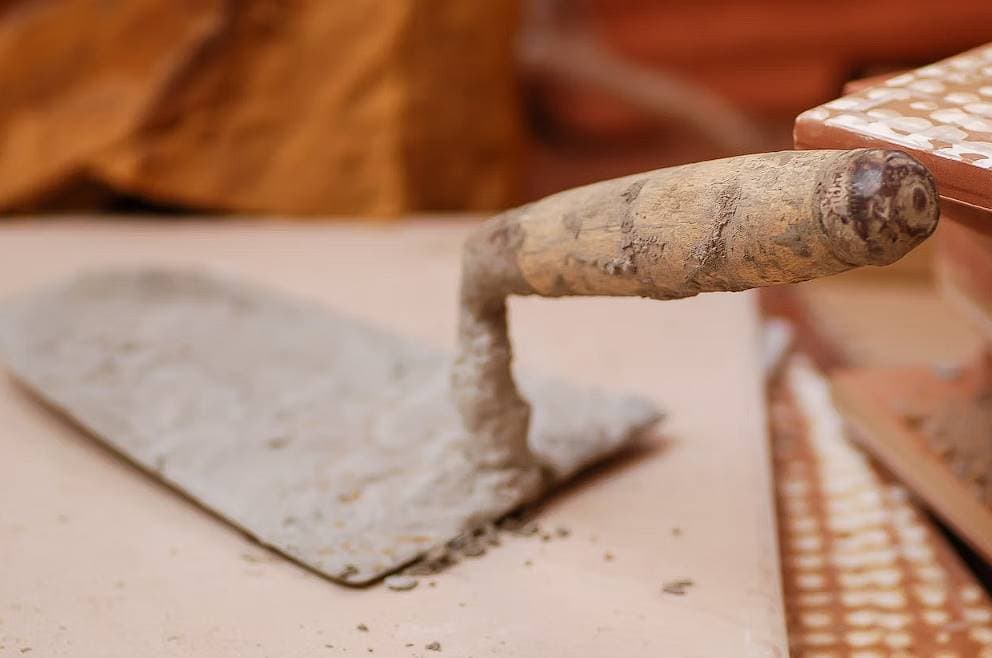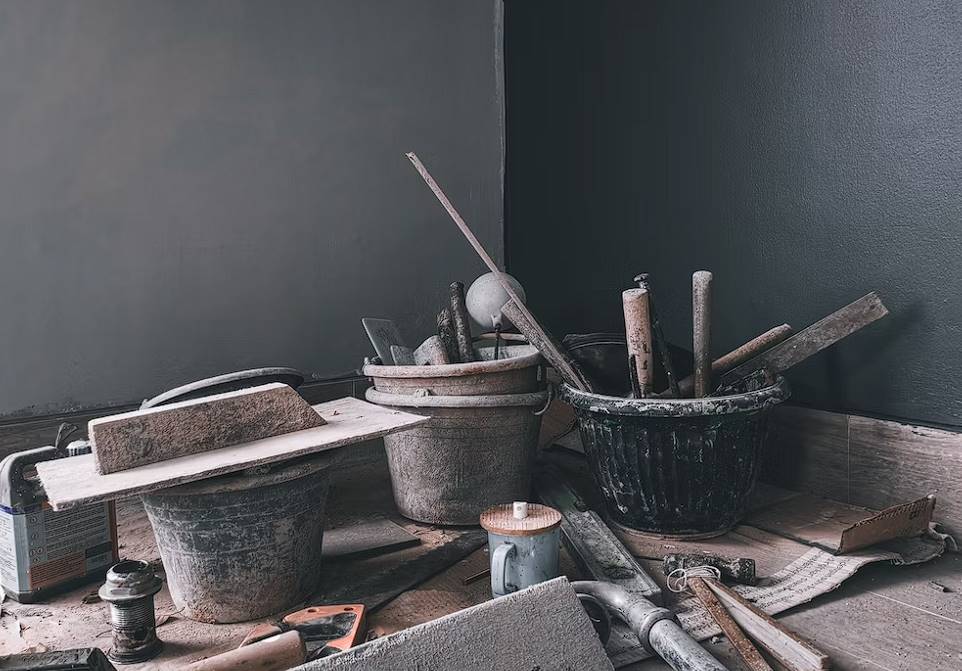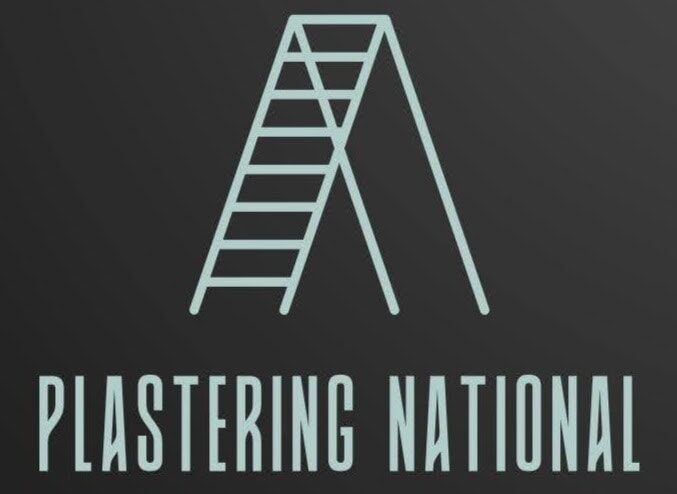Concrete is a fundamental material in construction, renowned for its strength and durability. However, achieving a flawless, smooth surface on concrete can be challenging.
This is where plastering in concrete plays a critical role. Plastering enhances concrete structures’ visual appeal, durability, and functionality, making it essential in various construction projects.
Let’s get straight to the point.
Plastering in concrete involves applying a thin layer of plaster or mortar to enhance the appearance and durability of concrete surfaces.
It protects against weather, moisture, fire, and noise while providing a smooth, aesthetically pleasing finish.
Different plastering methods suit specific uses, including traditional, stucco, lime, and gypsum. Proper plastering can conceal imperfections, lower maintenance costs, and offer a variety of design possibilities.
It’s important to use quality materials to achieve the best results, ensure proper surface preparation, and avoid common mistakes like uneven application and poor curing.
Understanding Plastering In Concrete

Plastering involves applying a thin layer of plaster or mortar to the concrete surface. This process improves the surface’s appearance and protects the concrete from environmental damage.
Plastering techniques help transform rough, uneven concrete surfaces into smooth, refined finishes suitable for structural walls, external facades, or decorative features.
Importance Of Plastering In Construction
Plastering serves multiple purposes in construction:
- Protection: It shields the concrete from water, moisture, and physical damage, prolonging its lifespan.
- Aesthetics: Plastering enhances the visual appeal of a structure, making it look more polished and uniform.
- Fire Resistance: A plastered surface is a barrier, slowing fire spread.
- Soundproofing: Plastering reduces noise transmission between rooms, improving acoustic comfort.
Essential Materials In Concrete Plastering
The quality of the plastering work heavily depends on the materials used. Each component plays a vital role in achieving a strong and smooth finish.
- Cement: Acts as the binding agent, providing strength to the plaster.
- Sand: Must be clean and properly graded to ensure a consistent texture.
- Lime: Adds flexibility and workability to the plaster mix.
- Gypsum: Used in interior plastering for its smooth finish and quick-setting properties.
- Additives: Fibres, polymers, or acrylics can be added to improve adhesion, flexibility, and water resistance.
The Benefits Of Plastering In Concrete
Plastering offers numerous aesthetic and practical advantages, making it indispensable in construction projects.
1. Enhanced Visual Appeal
Plastering improves the look of concrete surfaces, making them smooth and uniform. It allows for various decorative finishes, such as textured, glossy, or patterned designs, which can transform the appearance of residential and commercial buildings.
2. Weather And Wear Protection
Concrete surfaces exposed to the elements can deteriorate over time. Plastering provides an insulating layer that protects against moisture, temperature changes, and weather-related damage, extending the structure’s life.
3. Improved Fire Resistance
Plastering acts as a fire-resistant barrier, reducing the speed at which flames can spread. This added layer of protection can help contain fires and prevent extensive damage to the building.
4. Soundproofing Qualities
The dense nature of plaster makes it an effective sound barrier, limiting noise transmission through walls and ceilings. This quality is highly beneficial when noise reduction is a priority, such as in homes, offices, and hotels.
5. Design Flexibility
Plastering opens up a world of design possibilities. Skilled plasterers can create unique textures and patterns that add character to interior and exterior walls, catering to modern and classical architectural styles.
6. Concealing Imperfections
Plastering helps to mask any imperfections or irregularities in the concrete surface, providing a smooth base for painting or other decorative treatments.
7. Low Maintenance
Plastered walls and ceilings are relatively easy to maintain. Minor damages or cracks can be patched and re-plastered, ensuring the surface remains clean and appealing over time.
8. Cost-Effective Solution
Investing in plastering is cost-effective in the long run. Protecting the concrete reduces the need for frequent repairs and replacements, thereby saving on maintenance costs.
9. Environmentally Friendly Options
Eco-friendly plastering materials, like lime and clay, offer a sustainable choice for those looking to reduce the environmental impact of construction projects.
Common Plastering Techniques For Different Applications
Different plastering methods are employed based on the specific needs of the building. Each technique has its benefits and is suited to particular applications.
1. External Plastering
Also known as rendering, external plastering protects the building from moisture and weather damage. It usually involves cement-based or acrylic renders that are more robust and weather-resistant than internal plaster.
2. Internal Plastering
Gypsum-based plaster is commonly used for internal walls due to its smooth finish and quick drying time. It provides a uniform surface suitable for painting or wallpapering.
3. Decorative Plastering
This involves creating ornamental designs and textures on walls and ceilings. Decorative plastering is often found in theatres, historic buildings, and luxury homes, where visual detail is a priority.
4. Repair And Restoration Plastering
Lime-based plastering is often used in restoration projects for older buildings. It helps maintain the structure’s original materials while enhancing its durability.
5. Insulating Plastering
In colder regions, insulating plastering techniques improve a building’s energy efficiency. External Wall Insulation (EWI) systems are commonly used to reduce heat loss.
Understanding Different Types Of Plaster
Various plastering types cater to different needs in construction. Plaster choice depends on factors like durability, texture, and the project’s requirements.
1. Traditional Plastering
A mixture of cement, sand, and water is applied manually. This method is durable and widely used for both interior and exterior walls.
2. Stucco Plastering
Made from a blend of mortar, sand, lime, and water, stucco is commonly used for decorative, textured finishes on external surfaces.
3. Lime Plastering
Lime plaster, consisting of lime, sand, and water, is breathable and ideal for older or heritage buildings.
4. Gypsum Plastering
Quick-drying and smooth, gypsum plaster is often used for interior walls and ceilings, providing a neat finish.
Common Plastering Mistakes To Avoid

Achieving a flawless plaster finish requires attention to detail and the right techniques. Here are some frequent plastering errors to watch out for:
- Inadequate Surface Preparation: Ensure the concrete surface is clean and debris-free for better plaster adhesion.
- Incorrect Plaster Mixing: Follow precise mixing ratios to avoid using too thick or too thin plaster, which can lead to cracking or uneven drying.
- Uneven Application: Consistency is key when applying plaster. Uneven pressure can result in a bumpy finish, affecting the overall look.
- Ignoring Curing Time: Allow proper drying and curing times to prevent the plaster from cracking prematurely.
- Over-Troweling or Under-Troweling: Find the right balance when using the trowel to avoid overworking or under-finishing the surface.
- Skipping Control Joints: Incorporate control joints to prevent large plastered areas from cracking due to temperature changes.
- Using Low-Quality Materials: Invest in high-quality plaster materials to ensure a durable and aesthetically pleasing finish.
- Poor Ventilation: Proper ventilation ensures gypsum-based plasters dry effectively without mould growth.
Conclusion
Plastering in concrete is a vital component in construction that serves both functional and aesthetic purposes.
It transforms rough concrete surfaces into smooth, appealing finishes while protecting against the elements, fire, and noise.
By using appropriate plastering techniques and avoiding common mistakes, you can enhance the durability and visual appeal of any building.
The selection of plaster type and application method depends on the project’s specific needs, whether for internal walls, external facades, decorative features, or restoration work.
Plastering remains crucial in modern construction practices, with numerous benefits ranging from weather protection to design versatility.
Frequently Asked Questions
What is plastering, and why is it important in construction?
Plastering is a construction technique used to cover and protect concrete surfaces with a thin layer of plaster. It is important because it enhances the aesthetics of the structure, provides protection from weather and wear, improves fire resistance, and contributes to soundproofing properties.
What types of plastering techniques are commonly used in construction?
Common types of plastering techniques include traditional plastering, stucco plastering, lime plastering, and gypsum plastering. Each type has unique characteristics suitable for different applications.
What materials are used in plastering, and how do they affect the finish?
Plastering materials typically include cement, sand, water, lime, gypsum, and additives. The combination of these materials affects the strength, texture, and finish of the plastered surface.
How long does it take for plaster to cure and dry?
The curing and drying time of plaster depends on the type of plaster used and environmental conditions. Generally, it can take several days to a few weeks for the plaster to fully cure and dry.
What are some common mistakes to avoid in plastering?
Common mistakes to avoid in plastering include inadequate surface preparation, incorrect mixing of plaster, uneven application, ignoring curing time, over-troweling or under-troweling, using poor-quality materials, and rushing the process.

